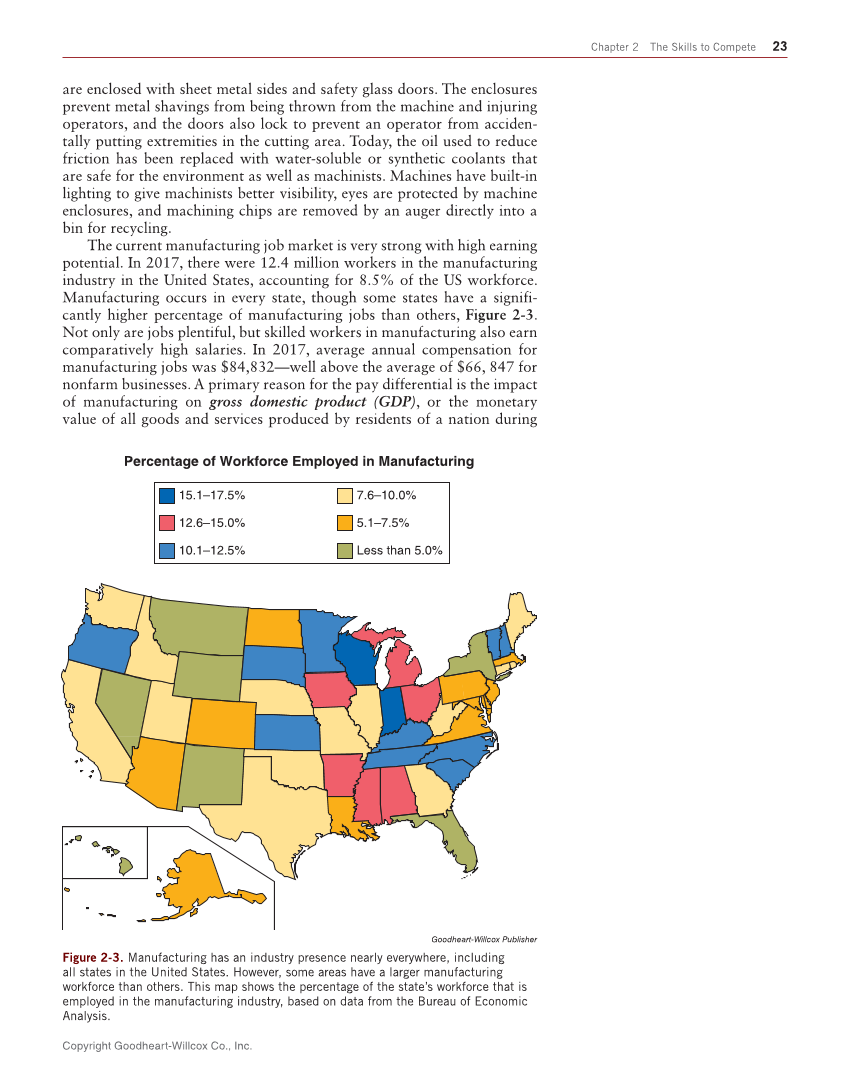Copyright Goodheart-Willcox Co., Inc. Chapter 2 The Skills to Compete 23 are enclosed with sheet metal sides and safety glass doors. The enclosures prevent metal shavings from being thrown from the machine and injuring operators, and the doors also lock to prevent an operator from acciden- tally putting extremities in the cutting area. Today, the oil used to reduce friction has been replaced with water-soluble or synthetic coolants that are safe for the environment as well as machinists. Machines have built-in lighting to give machinists better visibility, eyes are protected by machine enclosures, and machining chips are removed by an auger directly into a bin for recycling. The current manufacturing job market is very strong with high earning potential. In 2017, there were 12.4 million workers in the manufacturing industry in the United States, accounting for 8.5% of the US workforce. Manufacturing occurs in every state, though some states have a signifi- cantly higher percentage of manufacturing jobs than others, Figure 2-3. Not only are jobs plentiful, but skilled workers in manufacturing also earn comparatively high salaries. In 2017, average annual compensation for manufacturing jobs was $84,832—well above the average of $66, 847 for nonfarm businesses. A primary reason for the pay differential is the impact of manufacturing on gross domestic product (GDP), or the monetary value of all goods and services produced by residents of a nation during OHIO Percentage of Workforce Employed in Manufacturing 15.1–17.5% 12.6–15.0% 10.1–12.5% 7.6–10.0% 5.1–7.5% Less than 5.0% Goodheart-Willcox Publisher Figure 2-3. Manufacturing has an industry presence nearly everywhere, including all states in the United States. However, some areas have a larger manufacturing workforce than others. This map shows the percentage of the state’s workforce that is employed in the manufacturing industry, based on data from the Bureau of Economic Analysis.
